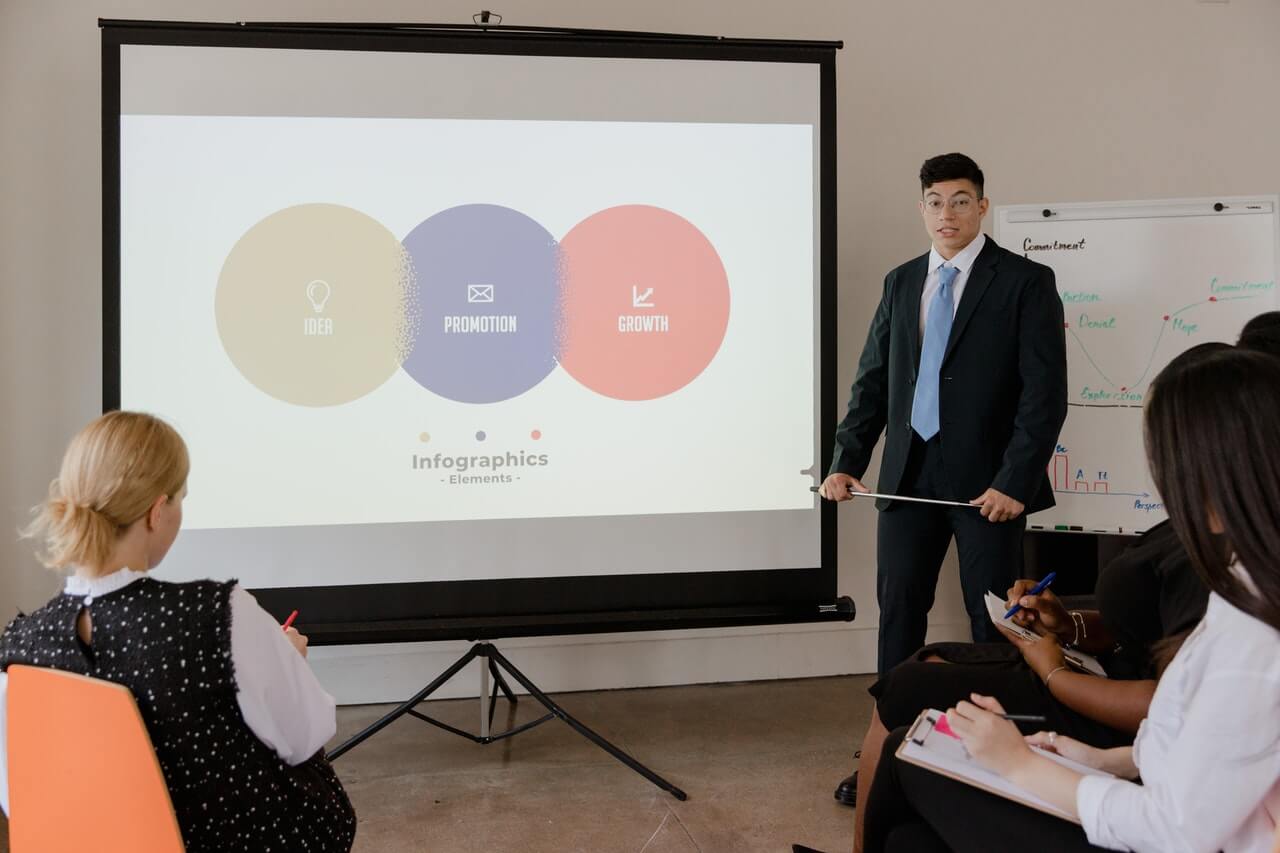Last time we talked about storytelling in presentations, and we named some of the benefits of doing so. If we are going to tell stories and enjoy those benefits, it is obvious that we will need to learn how to do it well. Accordingly, here are some of the best practices you will want to be aware of so you can tell stories effectively.
- Breathe and relax! You may be excited or a little bit nervous about telling your story. Be sure you aren’t holding your breath, which is very easy to do if you feel a little stressed. But you want your voice and face to be at their most expressive when you tell a story, so breathe and tell yourself it is going to be just fine. As you take that breath, relax your arms and shoulders. Let the tension go out of your tummy. Relax your hands. Much better.
- Be organized. Don’t expect the story to unfold gracefully without some advance planning and rehearsal. You may know your own story very well, but to tell it well is another thing altogether. Create a little map or write a script. Or rehearse it by recording yourself telling it. Listen and edit. Rather than an entertaining ramble, make sure your story is a well-crafted little gem.
- Share your passion. It was funny, or sad, or delightful. Otherwise you would not be telling the story. So get into it; feel the joy or the pain the story describes. Don’t hold it at arm’s length, but embrace the story and the emotion in it.
- Move around. The story gives you license to move around more than a typical formal presentation does. But don’t just wander. Step to the right to make one point, to the left to make a different one. Step toward the audience to go out of character for a moment, then back to your original spot to step back into character. Make the movement have meaning.
- Have an obvious ending. The beginning and ending are your most important parts to the story. Signal your ending with eye contact, a smile, a pause, and a verbal close. It might be a moral of the story, or a lesson learned. But do something to signal the end, rather than just wind down.
- Be animated. When telling a story, you have so much leeway to be dramatic. Act out the story in voices, accents, or inflection. Use sweeping gestures to describe the action. This is another great way to distinguish the story from the more formal parts of the presentation.
- Get to the point. The beginning is key; you want to catch and hold the audience’s attention. Don’t ramble around. Plan this part, rehearse it, and stick to your plan. Use just the right amount of detail to move into the story, and no more.
- Maintain eye contact. Don’t get so carried away by the story’s action that you forget about the audience. Use your eye contact to keep drawing them in, and to signal how important they are to you. Without the audience, you wouldn’t be telling the story at all.
- Keep it short. That means take out every scrap of material that does not move the story forward. This takes practice and editing skills. It takes discipline. But if you take too much time for your story, your business audience will likely become restless.
- PRACTICE. Practice out loud. Record and listen to your story. Video yourself and watch. Get a small audience to listen and critique. Tell stories over lunch or dinner. Tell an amusing anecdote at a social gathering. Take an improv or storytelling class. Read to children. Just get out and do it more often. Soon these new skills will feel comfortable and natural.
How about you? How are your storytelling skills? What do you like to hear when others are speaking? We would love to know.
Next time: more tips on telling stories well, plus a few don’ts.
 Sections of this topic
Sections of this topic

















